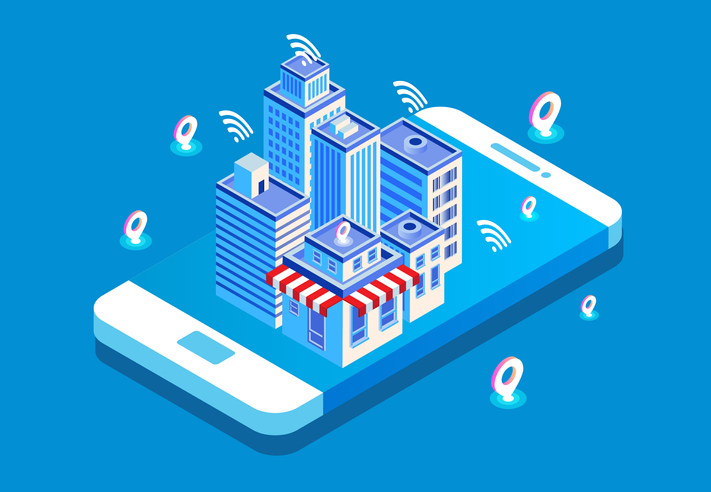
The Earth’s human population is consolidating at a rapid rate. More than half of all people now live in cities and generate about 80 per cent of global GDP. Keeping these growing urban areas operating effectively and sustainably has never been more important, writes Sash Mukherjee.

During 2020, increasing attention will be directed at the challenge of creating what is known as Smart Cities. These densely populated areas need to be efficient and provide high quality of life for those living in them.
These are five key trends that will drive the growth of Smart Cities during the coming 12 months and beyond. They are:
The adoption of ‘data smart’ strategies
The global economy is rapidly becoming digital, and data is at the very heart of many city-based activities. As a result, increasing numbers of cities are adopting specific data smart strategies as part of their ongoing development.
Such strategies are designed to address existing data silos and make data available across traditional organisational boundaries. Data availability is also being expanded through real-time capture using IoT devices and analysis using AI and analytics.
For these initiatives to be successful, there needs to be buy-in from all levels of government and public sector agencies. They need to ensure that a pervasive, data-driven culture is established at all levels. To aid in this process, there is likely to be an increase in the number of Chief Data Officers (CDOs) to drive the necessary changes.
Focus on smart mobility solutions
As cities grow, levels of traffic congestion and pollution inevitably increase. In an effort to overcome the challenge, some cities have trialled initiatives such as road space rationing or congestion pricing.
While these schemes have been shown to have some positive impact, ensuring they are successful in the longer term requires a technological infrastructure that makes implementation and enforcement seamless. Remote traffic monitoring and smart traffic lights will need a robust technology infrastructure.
During the next 12 months, Smart Cities will also focus on initiatives such as demand-responsive services where public transportation systems respond in real-time to changing passenger needs. Other initiatives will include increased mass transit, car-sharing and bike-sharing systems.
Achieving more efficient energy usage
It’s estimated that cities consume around 70% of the world’s energy, and as they grow this will continue to increase. Smart Cities are focusing on initiatives that reduce energy consumption and emissions while delivering better service to consumers.
In 2020, activities will range from promoting a greener environment, expanding use of renewable energy, and introducing ‘smart’ solutions for utility providers, enterprises, and homes. Smart meters can play a significant role in helping to predict usage and promote energy efficiency.
Some Smart Cities will put in place more incentives to drive greater adoption of electric vehicles while others will increase usage of solar energy.
Continuing growth of the ‘gig economy’
As cities grow, the way people work within them is also changing. There will be a continuing increase in the number of people working part-time or on contract.
It’s a trend that will only go up as more millennials and Gen Z people enter the workforce. Born with access to the internet and being digitally native, they will increasingly want to work on their terms, including flexible hours.
As a result, there will be moves in many Smart Cities to give contract workers the same rights as employees, such as unemployment benefits and minimum wages. Some companies will also begin to rethink their IT practices to accommodate a more mobile workforce
Growing use of AI for public safety
In cities, CCTV cameras are already widely used for a range of reasons including traffic monitoring, remote asset tracking, and crime prevention. In 2020, Smart Cities will continue this trend.
While government use of surveillance brings benefits, it also brings criticism. Some are concerned that linking cameras with sophisticated AI will lead to invasion of personal privacy and a reduction in human rights.
Regardless of this, the adoption of AI technologies such as real-time image and video analytics, and facial recognition is set to grow quickly. It’s already in place in airports and its use in public spaces will rise rapidly.
In Smart Cities, AI tools will also be increasingly used for activities such as predicting crimes and assessing the sentencing of offenders based on their risk to society. Eventually, the tools will allow many decisions to be made in real-time.
Because there will continue to be criticism from civil rights advocates about the use of such technology, Smart City authorities will need to find a happy medium between effectiveness and personal rights.
Together, these trends will help to guide the growth and development of Smart Cities throughout 2020 and well beyond. Initiatives undertaken will ensure that cities around the world continue to flourish and provide an efficient, safe and enjoyable environment for all residents.
*Sash Mukherjee is Principal Analyst at Ecosystm
Comment below to have your say on this story.
If you have a news story or tip-off, get in touch at editorial@governmentnews.com.au.
Sign up to the Government News newsletter